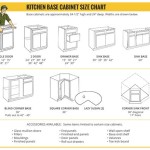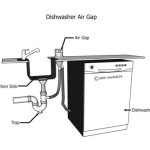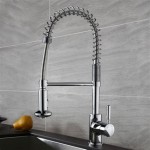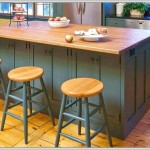The Perfect Kitchen Countertop Height for Maximum Comfort
Your kitchen countertop is a crucial element that significantly affects your cooking and food preparation experience. Its height plays a vital role in ensuring both comfort and efficiency while working in the kitchen. Choosing the right countertop height can prevent strain, fatigue, and even injuries.
The ideal countertop height depends on several factors, including your height, arm length, and the tasks you typically perform in the kitchen. Here are some essential aspects to consider when determining the optimal height:
Standing Height
The standing height, measured from the floor to the top of the countertop, is a key factor. For most individuals, a countertop height between 34 and 38 inches is generally comfortable for standing tasks such as chopping vegetables, kneading dough, or washing dishes.
However, if you are taller or shorter than average, you may want to adjust the height accordingly. A taller person may require a slightly higher countertop, while a shorter person may prefer a lower one.
Arm Length
Your arm length also influences the ideal countertop height. When standing at the countertop, your elbows should be bent at a 90-degree angle when your palms are flat on the surface. This position provides maximum comfort and efficiency for tasks like rolling dough, stirring sauces, or beating eggs.
If the countertop is too high or too low, you may experience strain or fatigue in your arms and shoulders. Adjust the height until you find the most comfortable position for your arm length.
Task-Specific Heights
Certain tasks may require specific countertop heights. For instance, a lower countertop around 30 inches can be suitable for tasks that require sitting down, such as peeling vegetables or frosting cakes.
Conversely, a higher countertop around 40 inches can be beneficial for tasks that involve reaching or lifting heavy items, such as transferring hot pots or large baking dishes.
Countertop Design
The design of the countertop can also impact the perceived height. A thicker countertop can make the standing height feel slightly lower, while a thinner countertop can create the illusion of a higher height.
If you prefer a specific countertop material or design, consider its thickness and how it will affect the overall height.
Ergonomics and Safety
Maintaining good ergonomics in the kitchen is crucial to prevent strain and injuries. The countertop height should allow you to work comfortably without hunching over or straining your back. Proper posture is essential to minimize fatigue and potential health issues.
In addition, the countertop height should be appropriate for your safety. A too-low countertop can increase the risk of back pain, while a too-high countertop can make it difficult to reach items or prevent accidents like spills or burns.
Conclusion
Choosing the right kitchen countertop height is essential for maximizing comfort, efficiency, and safety. Consider your height, arm length, task-specific needs, countertop design, and ergonomic principles. By carefully determining the optimal height, you can create a kitchen that makes cooking and food preparation a pleasurable experience.

The Right Height For Your Counters And 5 Other Key Kitchen Measurements

Standard Height For Counters Tables Shelves Lights In The Kitchen Beautiful Homes

Your Kitchen Renovation Measured For Perfection Rona

Kitchen Cabinet Measurements Clearances Kadilak Homes

Your Kitchen Renovation Measured For Perfection Rona

10 Key Kitchen Dimensions You Need To Know

Kitchen Cabinet Measurements Clearances Kadilak Homes

Standard Kitchen Counter Depth

Bar Counter Height Vs Countertop What S The Difference Sa Decor Design

Plan Your Dream Kitchen Standard Modular Dimensions Beautiful Homes
Related Posts








